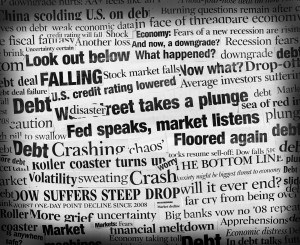AARP Hearing Center
3 Lessons from a Stock Market 'Freak Out'
By Allan Roth, December 8, 2014 03:04 PM
Just about two months ago, on Oct. 15, the headlines read “ Market Freak Out” as the Dow Jones Industrial Average “ plunged.” Headlines warned “ Why the selling is just getting started.” Fear had returned to the market.
My editor asked me to chime in and I posted “ Why the Stock Market Plunge Is Not World’s End.” As it happened, not only did the world survive, the stock market quickly recovered. Now is the perfect time to review three investment lessons

that can save your bacon going forward. I’ll even suggest an action item to consider now.
>> 7 Tips to Save Big This Winter
Lesson One: Some media sensationalize the news to get your attention and that can hurt you. The so-called plunge amounted to about a 7.5 percent decrease from the all-time high, using a broader measure of all U.S. stocks including the reinvestment of dividends. You can see the terrifying depth of this plunge in the chart below. Clearly a headline that reads “stocks give up 7.5 percent” isn’t going to get read as often as headlines using the words “freak out” and “plunge,” but it is far more accurate.

Lesson Two: Experts forecast the recent past and no one knows the future. As I was writing my piece on Oct. 15, the market had bottomed out and the recovery had begun. It’s not that I knew the bottom had been reached, I just knew enough not to think I knew. There is the persistent allure of stock-market timers that causes us to buy high and sell low. In fact, data from the Chicago-based mutual fund researcher Morningstar demonstrates that bad timing costs us an average of 2.49 percentage points annually in return. Researchers call this the performance gap.
Lesson Three: Your risk tolerance probably isn’t as high as you think. A paltry 7.5 percent market pullback caused many to panic. Even knowing what I do about behavioral finance, I was surprised when three of my clients contacted me with their concerns and their desire to bail out of stocks.
That said, I admittedly felt a touch of pain on Oct. 15 myself, though nothing like I felt on March 9, 2009, when stocks had lost more than half of their value, which you can also see in the chart above. Stocks went down about 50 percent then, or nearly seven times this little October blip. Talk about feeling the pain! It felt a thousand times stronger back then, and buying stocks in 2008 and 2009 was perhaps the hardest thing I’ve ever done in investing.
>> Get discounts on financial services with your AARP Member Advantages.
So, what should you do today?
Ask yourself what you would do if your stocks lost half their value in the next few months. If your answer is that you would buy more stocks, give yourself kudos, but only for giving a theoretical answer to the question. In reality, the emotional response to rebalancing by buying more stocks after a plunge is not that easy to simulate.
So now that the stock market has recovered, it’s a perfect time to give your portfolio and behavior a reality assessment to make sure you aren’t taking more risk than you can handle. If you think stocks can’t fall 50 percent or more again, or that you’ll have warning before it happens, then you are kidding yourself.
Photo: iStock/Allkindza Chart: Wealth Logic, data from Yahoo Finance

Also of Interest
- Your Bond Income Could Be an Illusion
- 7 Products That Make Perfect Presents for Under $50 Each
- Fight Fraud and ID Theft With the AARP Fraud Watch Network
- Join AARP: savings, resources and news for your well-being
See the AARP home page for deals, savings tips, trivia and more.































































